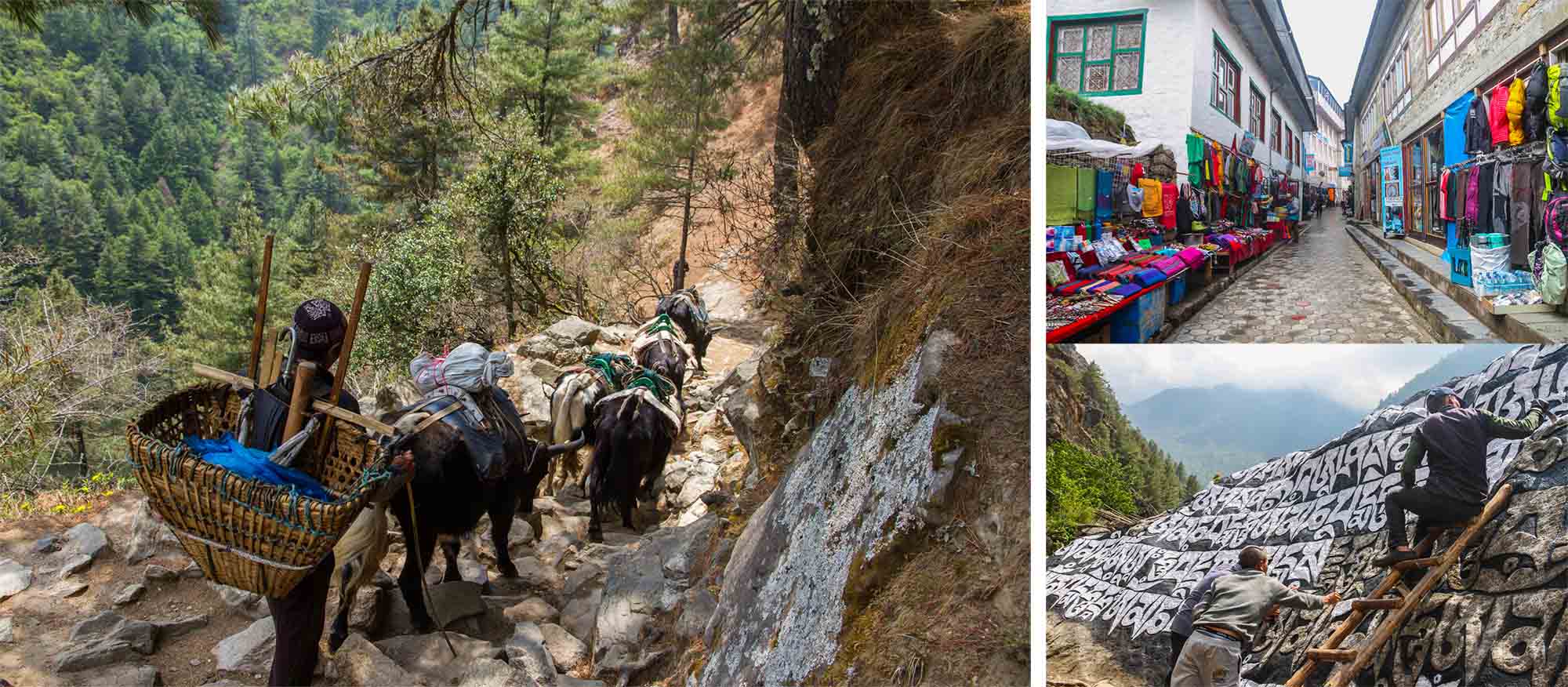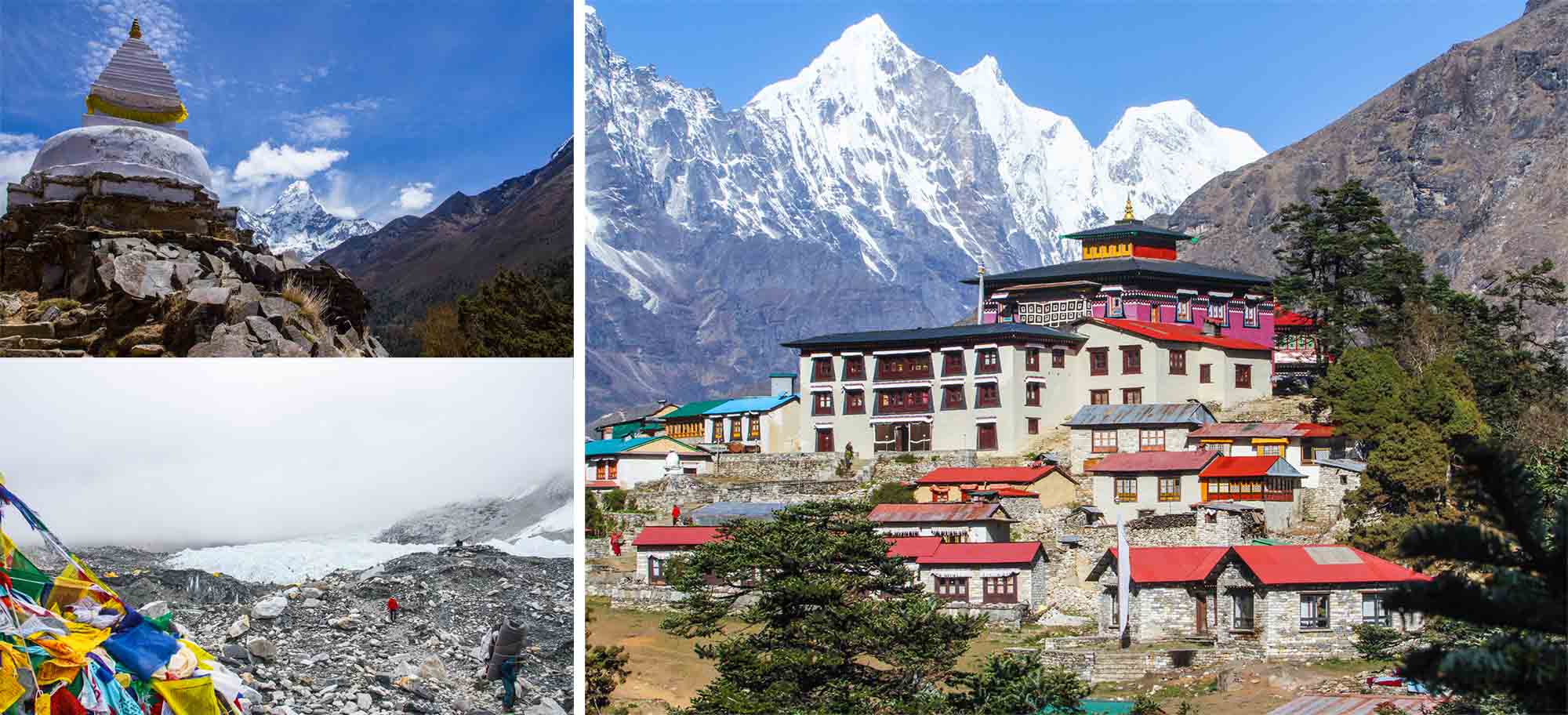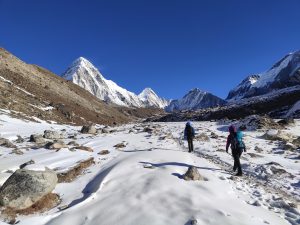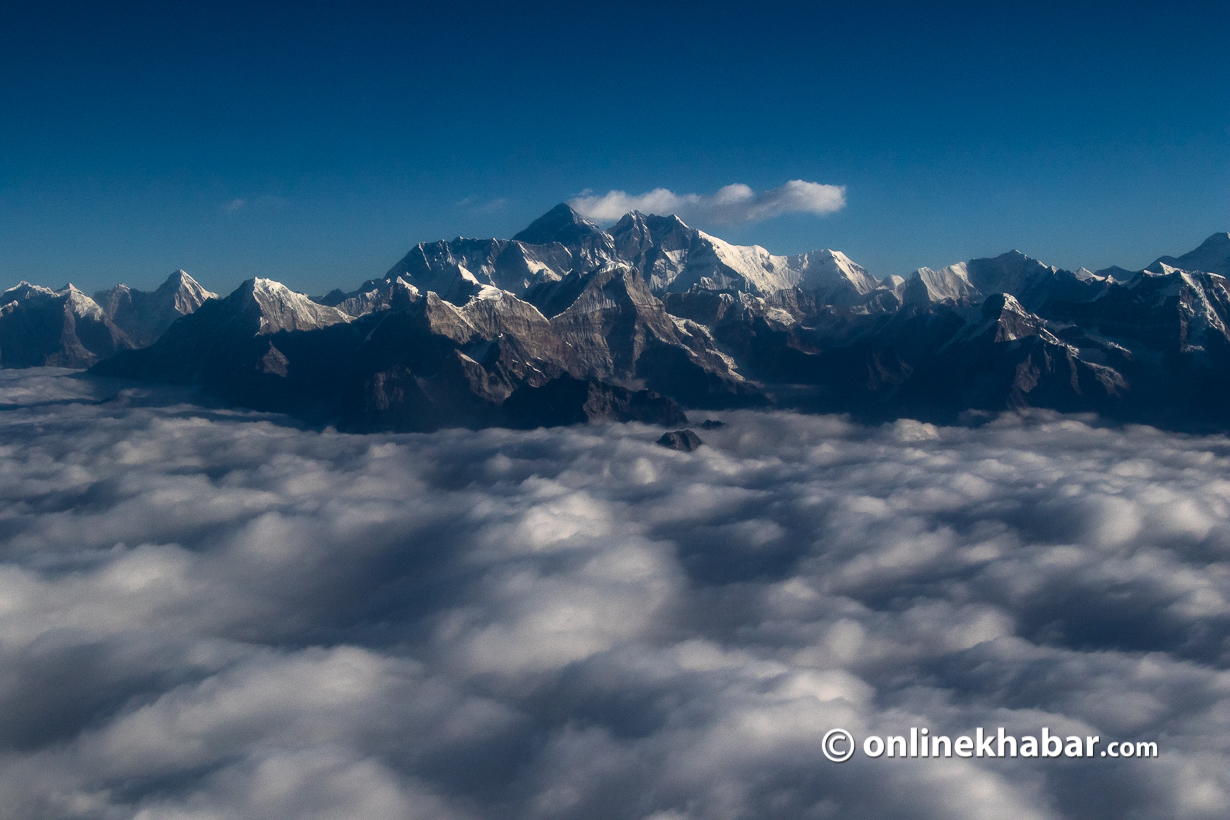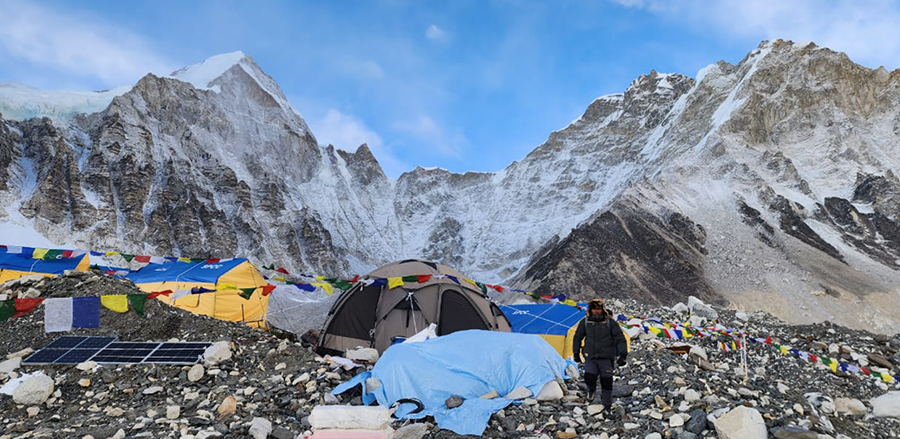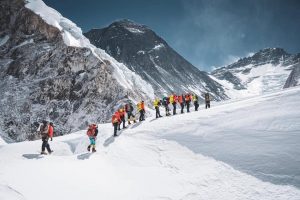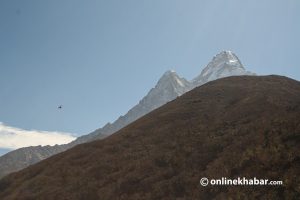As the trekking season comes near, photographer Bharat Bandhu Thapa visited the Everest region to document its beauty and diversity. With clear afternoons and balmy evenings, Nepal welcomes majority of its visitors to the Khumbu valley during the months of September-November.
This trekking season holds prominence in the light of the earthquake last year, which although had minimum effect on the region, made trekkers wary of visiting. But as these images tell, the region remains virtually the same with its characteristic beauty and appeal.
The flagship trek to the Himalayas is ready than ever to welcome visitors.
Entering the Everest region via Lukla is to enter a different world altogether, the distinction not only set by geography but also through sound. As the noise of the twin otters taking off and landing at the Lukla airport levels down, an all pervading silence envelops the region. Bells hung around the necks of yaks clang as prayer flags strewn in impossible corners flutter in the mountain breeze. At Namche, the cobbled streets are a clatter of footfalls. Along most of the trek, you will pass through cryptic looking mane stones with Buddhist chant written all over. (Opener) On the way to Gorakshep, the final stop before reaching the base camp. Khumbu glacier pours from the massifs like an avalanche of ice and rocks.
If there is a motif that is emblematic of the region, it is probably the colourful prayer flags, which have their roots in Buddhism, a religion followed by the inhabitants of the region. They are strewn all over small stupas (above, top left) and major monasteries like the Tengboche monastery (above, right) as a token of reverence. At the base camp (above, bottom left) and Kalapatthar, the final legs of the journey, they signify the triumph of trekkers and the end of the arduous journey. At Thukla, in the mountaineers’ cemetery (not pictured), they stand as a solemn reminder of the dangers of these mountains.
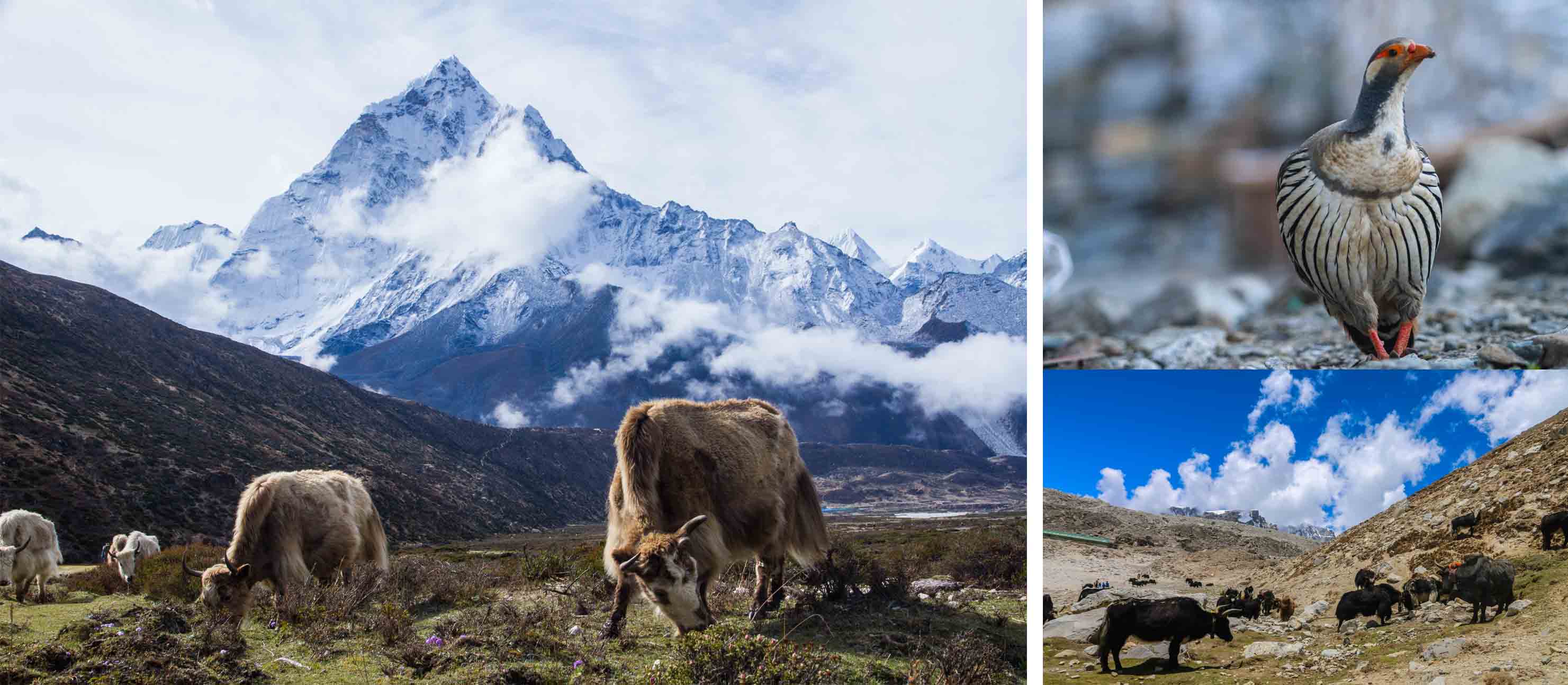
River Dushkoshi cuts in and out of the Khumbu valley forming the fertile lowlands of Phakding and Monjo. These lowlands act as a buffer to the grassy flatlands of Pheriche and Dingboche (pictured above), beyond Namche and Tengboche, where yaks graze freely.

The massifs in the north are the only equaliser to the striking diversity of landscape of the region. (Clockwise) The trek, which starts from the fertile basin of the Dudhkoshi, makes way to verdant forests and grassy flatlands of Tengboche, will take you to desolate places like Dingboche and Lobuche, where vegetation is rare.
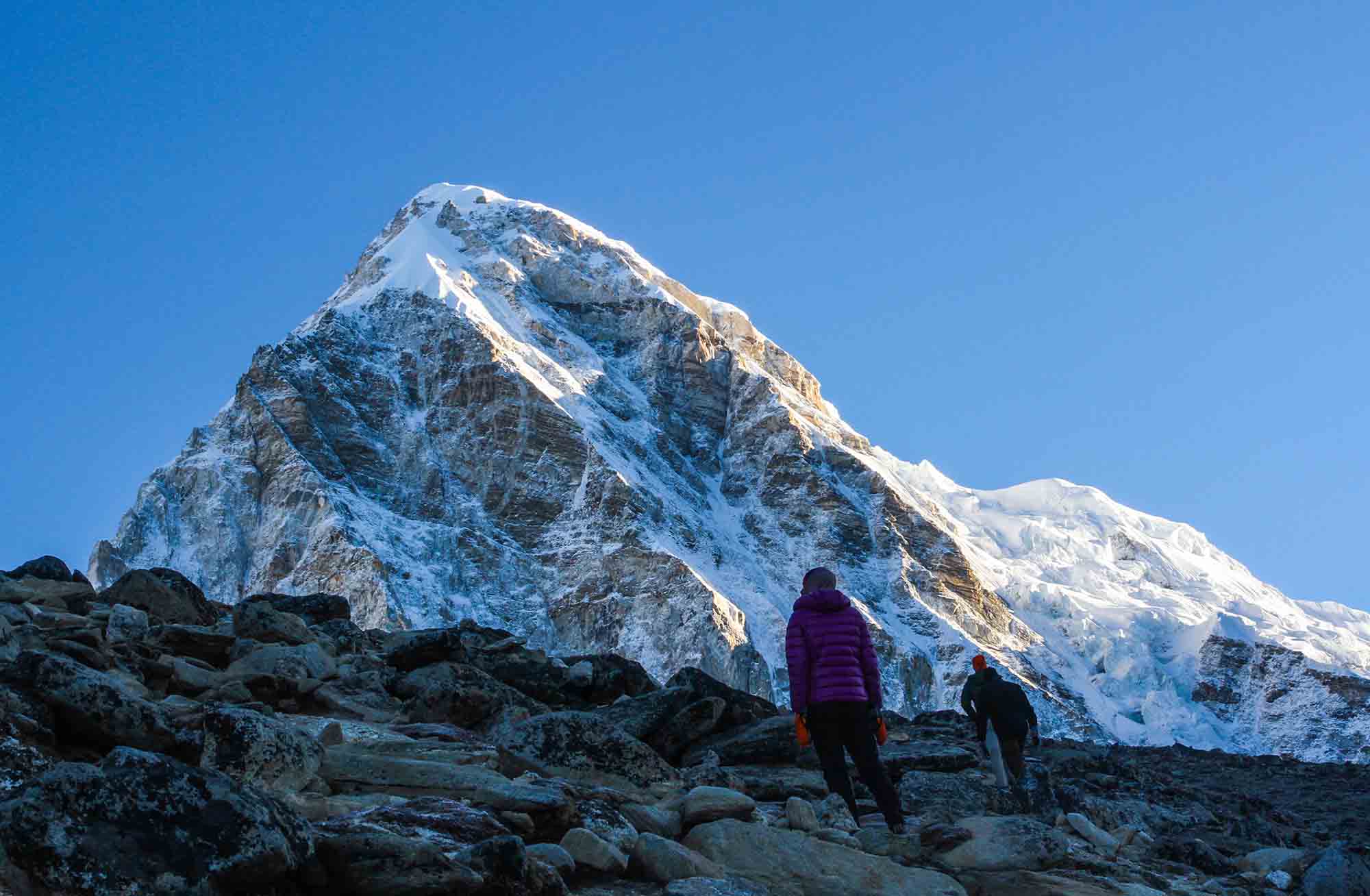
From Gorakshep, the peaks bordering Tibet are literally a stone’s throw away. The vistas, in front and all around you, widen with awesome sights of the peaks. From here, the base camp is nearly 4 hours away.
From Gorakshep, another destination to go to is Kalapatthar, which offers a panoramic view of the mountain range. A trek to Kalapatthar is mandatory; the sight of Everest from the base camp is obstructed by small peaks in front of it.
***
Read also
The Everest climbing season in Nepal is over. Here are the highlights



